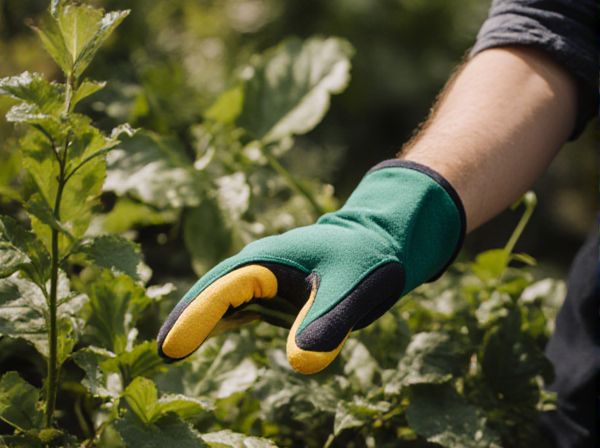
Pre-chilling vs Pre-warming Illustration
Pre-chilling seeds involves exposing them to low temperatures to break dormancy and enhance germination rates, while pre-warming seeds accelerates metabolic processes by providing warmth before planting. Pre-chilling is commonly used for seeds of temperate plants that require cold stratification, whereas pre-warming benefits tropical or subtropical seeds by promoting rapid enzyme activation. Understanding the specific seed type and its environmental needs is crucial for selecting the appropriate pre-treatment method to optimize germination success.
Table of Comparison
| Factor | Pre-chilling | Pre-warming |
|---|---|---|
| Definition | Exposure of seeds to low temperatures before sowing | Exposure of seeds to warm temperatures before sowing |
| Temperature Range | 0degC to 10degC | 20degC to 35degC |
| Purpose | Breaks seed dormancy and enhances cold tolerance | Accelerates germination and uniform seedling emergence |
| Duration | 24 to 72 hours or longer | 12 to 48 hours |
| Best For | Cold-sensitive seeds needing dormancy relief | Seeds that benefit from rapid germination |
| Effect on Germination Rate | Increases germination percentage by overcoming dormancy | Speeds up germination timing |
| Common Seed Types | Carrot, lettuce, onion | Tomato, pepper, cucumber |
Understanding Pre-chilling and Pre-warming in Seed Germination
Pre-chilling involves exposing seeds to low temperatures to break dormancy and enhance enzymatic activity essential for germination. Pre-warming, on the other hand, uses moderate heat to accelerate metabolic processes and stimulate faster seed emergence. Choosing between pre-chilling and pre-warming depends on seed species-specific dormancy mechanisms and environmental requirements for optimal germination.
The Science Behind Seed Dormancy Break
Seed dormancy is primarily regulated by environmental cues, where pre-chilling (stratification) mimics natural cold periods to trigger biochemical changes essential for germination. This cold treatment reduces abscisic acid levels and enhances gibberellin synthesis, breaking the dormancy imposed by physiological and morphological barriers. In contrast, pre-warming accelerates metabolic activity but often fails to overcome dormancy without a preceding cold period, making pre-chilling critical for species with deep physiological dormancy.
When to Use Pre-chilling for Seed Germination
Pre-chilling is essential for seeds that require cold stratification to break dormancy, such as many temperate tree species and perennial flowers. This process mimics natural winter conditions, promoting uniform germination in seeds sensitive to warm environments. Seeds that originate from climates with cold winters typically benefit from pre-chilling to enhance germination rates and seedling vigor.
Best Seeds for Pre-chilling Techniques
Pre-chilling techniques are most effective for seeds of temperate plants such as carrots, lettuce, and spinach, which require cold stratification to break dormancy and enhance germination rates. These seeds benefit from exposure to low temperatures, typically between 1-5degC, for periods ranging from two to eight weeks to simulate winter conditions. By contrast, seeds of tropical plants generally do not respond well to pre-chilling and are better suited for pre-warming treatments that promote faster sprouting.
Optimal Methods for Pre-chilling Seeds
Optimal methods for pre-chilling seeds involve maintaining a consistent temperature range between 1degC and 5degC to effectively break dormancy and promote uniform germination. Pre-chilling duration typically ranges from 2 to 8 weeks, depending on the species, ensuring seeds develop enhanced metabolic activity prior to sowing. Proper moisture content during pre-chilling is critical, as overly dry or saturated conditions can negatively impact seed viability and germination rates.
Pre-warming: Benefits and Suitable Seeds
Pre-warming seeds accelerates metabolic processes, leading to faster and more uniform germination in warm-season crops such as tomatoes, peppers, and beans. Elevated temperatures during pre-warming enhance enzyme activity and cell division, promoting vigorous seedling development. This technique is particularly beneficial for seeds with moderately thick seed coats that require warmth to break dormancy and initiate growth.
Step-by-Step Guide to Pre-warming Seeds
Pre-warming seeds involves placing them in a warm environment, typically between 70-85degF (21-29degC), for 12 to 24 hours before planting to accelerate the germination process. This method helps activate metabolic enzymes crucial for seed sprouting by simulating early spring soil temperatures. Maintaining consistent warmth during pre-warming ensures higher germination rates and uniform seedling development.
Comparing Germination Success: Pre-chilling vs. Pre-warming
Pre-chilling seeds typically enhances germination success by breaking seed dormancy and promoting uniform sprout emergence, especially in species adapted to cold climates. In contrast, pre-warming accelerates metabolic processes but may reduce viability in cold-sensitive seeds or those requiring stratification. Comparative studies reveal that pre-chilling often yields higher germination rates and seedling vigor compared to pre-warming, emphasizing its role in optimizing seed performance across diverse horticultural applications.
Troubleshooting Common Germination Issues
Pre-chilling seeds can break dormancy by mimicking winter conditions, improving germination rates for cold-stratified species, while pre-warming enhances metabolic activity in warm-season seeds that require higher temperatures. Troubleshooting common germination issues involves adjusting pre-chilling duration to prevent seed rot and optimizing pre-warming periods to avoid premature seedling stress or drying. Monitoring temperature and moisture levels during these treatments is crucial for maximizing germination success across diverse plant species.
Choosing the Right Method for Your Garden Seeds
Pre-chilling and pre-warming techniques significantly impact seed germination rates by mimicking natural environmental cues that trigger sprouting in different plant species. Pre-chilling, or stratification, is ideal for cold-hardy seeds like apples and carrots, breaking dormancy through exposure to low temperatures, while pre-warming suits tropical and subtropical seeds such as peppers and tomatoes by promoting metabolic activity at higher temperatures. Selecting the right method depends on the seed type and its native growing conditions, ensuring optimal moisture, temperature control, and timing to maximize germination success in your garden.
Pre-chilling vs Pre-warming Infographic

 gardendif.com
gardendif.com